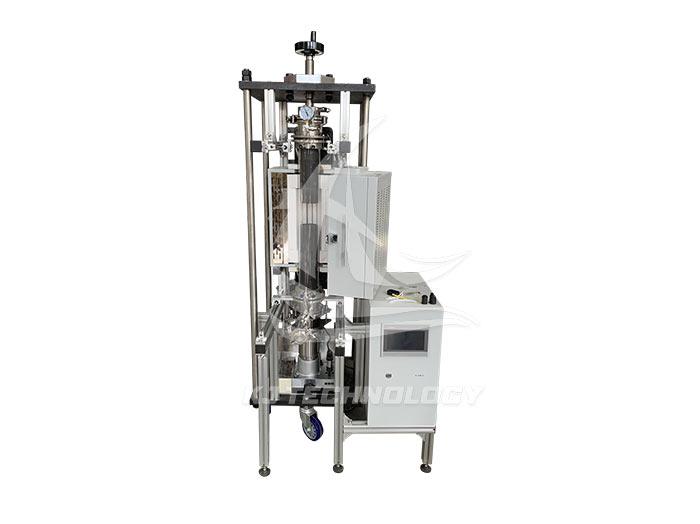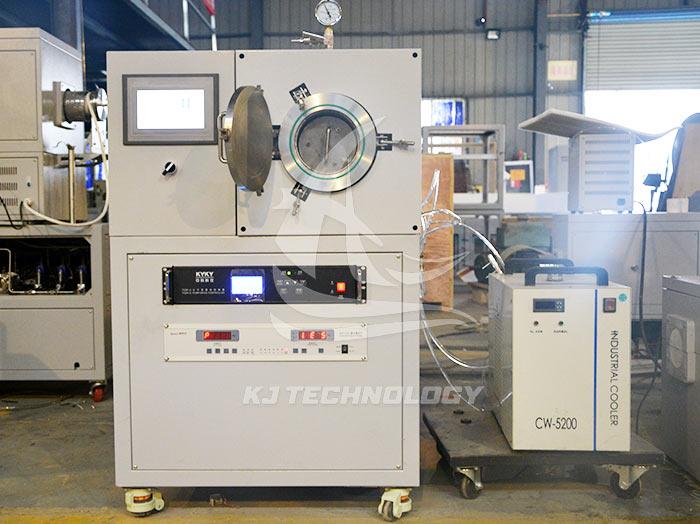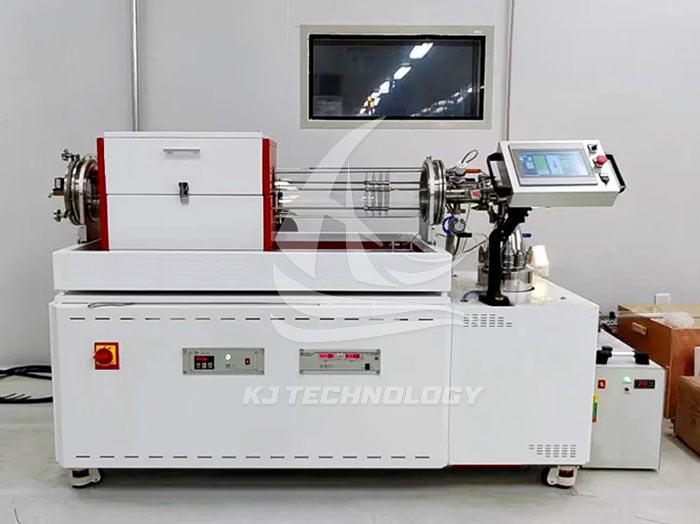The temperature measurement of the high vacuum and high temperature muffle furnace is inconsistent with the actual temperature
 09-16-2025 Author: KJ technology
09-16-2025 Author: KJ technology
Inconsistent temperature measurement between high vacuum and high temperature muffle furnace and actual temperature is a common problem, which may be caused by factors such as temperature measurement element errors, uneven thermal field distribution, vacuum environment influence, control system defects, or human operation errors. The following is a specific analysis of the reasons and solutions:
1. Temperature measuring element error
Thermocouple type mismatch
Problem: Different thermocouples (such as K-type, S-type, B-type) have different temperature measurement ranges and accuracies. If a thermocouple that does not match the process temperature is selected (such as using K-type to measure temperatures above 1600 ℃), it will result in reading deviation.
Solution: Select the appropriate thermocouple based on the temperature range of the process:
Low temperature range (<1200 ℃): N-type;
Medium temperature range (1200-1400 ℃): S-type;
High temperature range (>1400 ℃): Type B.
Thermocouple aging or damage
Problem: Long term use at high temperatures can cause oxidation of thermocouple wires, grain growth, or insulation layer damage, leading to signal drift or short circuits.
Solution:
Regularly calibrate thermocouples (recommended every 6 months) and compare readings using a standard temperature source (such as a platinum rhodium 10 platinum thermocouple calibration device);
Replace immediately if signs of aging are found, such as darkening of color or cracking of insulation layer.
Improper installation position of thermocouple
Problem: The thermocouple is not inserted into the workpiece or the center of the heating zone, resulting in a discrepancy between the temperature measurement point and the actual heating zone temperature.
Solution:
Insert the thermocouple probe into the interior of the workpiece or the geometric center of the heating zone;
Use ceramic protective sleeves to secure thermocouples and avoid displacement caused by vibration.
2. Uneven distribution of thermal field
Defects in furnace structure
Problem: Unreasonable layout of heating elements (such as single-sided heating), aging insulation layer, or inadequate sealing of furnace doors, resulting in large temperature gradients inside the furnace.
Solution:
Optimize the layout of heating elements (such as using three-dimensional heating);
Regularly check the integrity of the insulation layer (such as ceramic fiber, molybdenum foil) and replace damaged parts in a timely manner;
Ensure that the sealing strip of the furnace door is not aged and there is no air leakage after closing.
The impact of workpiece placement
Problem: The stacking of workpieces is too dense or close to the furnace wall, which hinders the circulation of heat flow and leads to low local temperatures.
Solution:
Control the loading capacity of workpieces (it is recommended not to exceed 60% of the furnace chamber volume);
Maintain a distance of ≥ 50mm between the workpiece, furnace wall, and heating element;
Use alumina ceramic supports to support the workpiece and avoid direct contact with the furnace bottom.
3. Impact of vacuum environment
Thermal radiation loss
Problem: In a vacuum environment, heat transfer mainly relies on radiation, and the emissivity (ε) of the workpiece surface affects radiation efficiency. If there is a large difference in emissivity between the temperature measuring element and the workpiece, it will lead to reading deviation.
Solution:
Measure the surface emissivity of the workpiece (using an infrared emissivity measuring instrument) and input the correction value in the temperature control system;
For high emissivity workpieces (such as alumina ceramics, with an ε ≈ 0.9), direct temperature measurement can be performed; For low emissivity workpieces (such as polished metals, with an emissivity of approximately 0.1), a high emissivity coating (such as black paint, with an emissivity of approximately 0.95) should be applied.
Gas thermal conductivity interference
Problem: When the vacuum degree is insufficient, residual gases (such as water vapor and oxygen) can affect the accuracy of temperature measurement through thermal conduction.
Solution:
Ensure that the vacuum degree meets the standard (high temperature processes require<10 ⁻ ³ Pa);
Pre evacuate to the target value and hold for 10-15 minutes before heating up.
4. Control system defects
PID parameter mismatch
Problem: The proportional (P), integral (I), and derivative (D) parameters of the PID controller were not optimized according to the characteristics of the furnace, resulting in temperature fluctuations or overshoot.
Solution:
Using self-tuning functions (such as Ziegler Nichols method) to optimize PID parameters;
When manually adjusting, follow the principle of "P first, I then D" and gradually approach the optimal value.
Sensor signal interference
Problem: Electromagnetic interference (such as high-frequency heating power supply) or poor grounding can cause distortion of temperature measurement signals.
Solution:
Use shielded thermocouple cables and single ended grounding;
Arrange temperature measurement circuits away from strong electromagnetic sources such as transformers and motors.
5. Human error in operation
Temperature calibration error
Problem: Failure to calibrate regularly or improper calibration methods (such as using untraceable standard temperature sources).
Solution:
Every year, send the measurement institution for calibration and obtain the calibration certificate;
Use traceable standard platinum rhodium 10 platinum thermocouples for internal calibration.
Process parameter setting error
Problem: The heating rate is too fast (>10 ℃/min) or the holding time is insufficient, resulting in the internal temperature of the workpiece lagging behind the furnace temperature.
Solution:
Set a reasonable heating rate based on the size of the workpiece and the thermal conductivity of the material (such as ceramic parts ≤ 5 ℃/min);
Extend the insulation time until the temperature inside and outside the workpiece is uniform (which can be verified by multi-point monitoring with thermocouples).
6. Example of comprehensive solution
Scenario: A high vacuum and high temperature muffle furnace (1600 ℃) is used for sintering alumina ceramics. The temperature measurement shows 1600 ℃, but the workpiece has not actually reached the sintering temperature.
Troubleshooting steps:
Check thermocouple: Confirm the use of S-type thermocouple, valid calibration certificate, and insert the probe into the center of the workpiece;
Verification of thermal field: 9 thermocouples (upper, middle, lower, left, middle, right, front, middle, rear) are evenly arranged in the furnace, and the measured temperature gradient is<± 5 ℃;
Optimize the process: reduce the heating rate to 3 ℃/min and extend the insulation time to 4 hours;
Correction emissivity: Measure the emissivity of alumina ceramics (ε=0.9) and input the correction value in the temperature control system.
Result: The actual temperature of the workpiece reached 1600 ℃, and the density of the sintered body increased.








